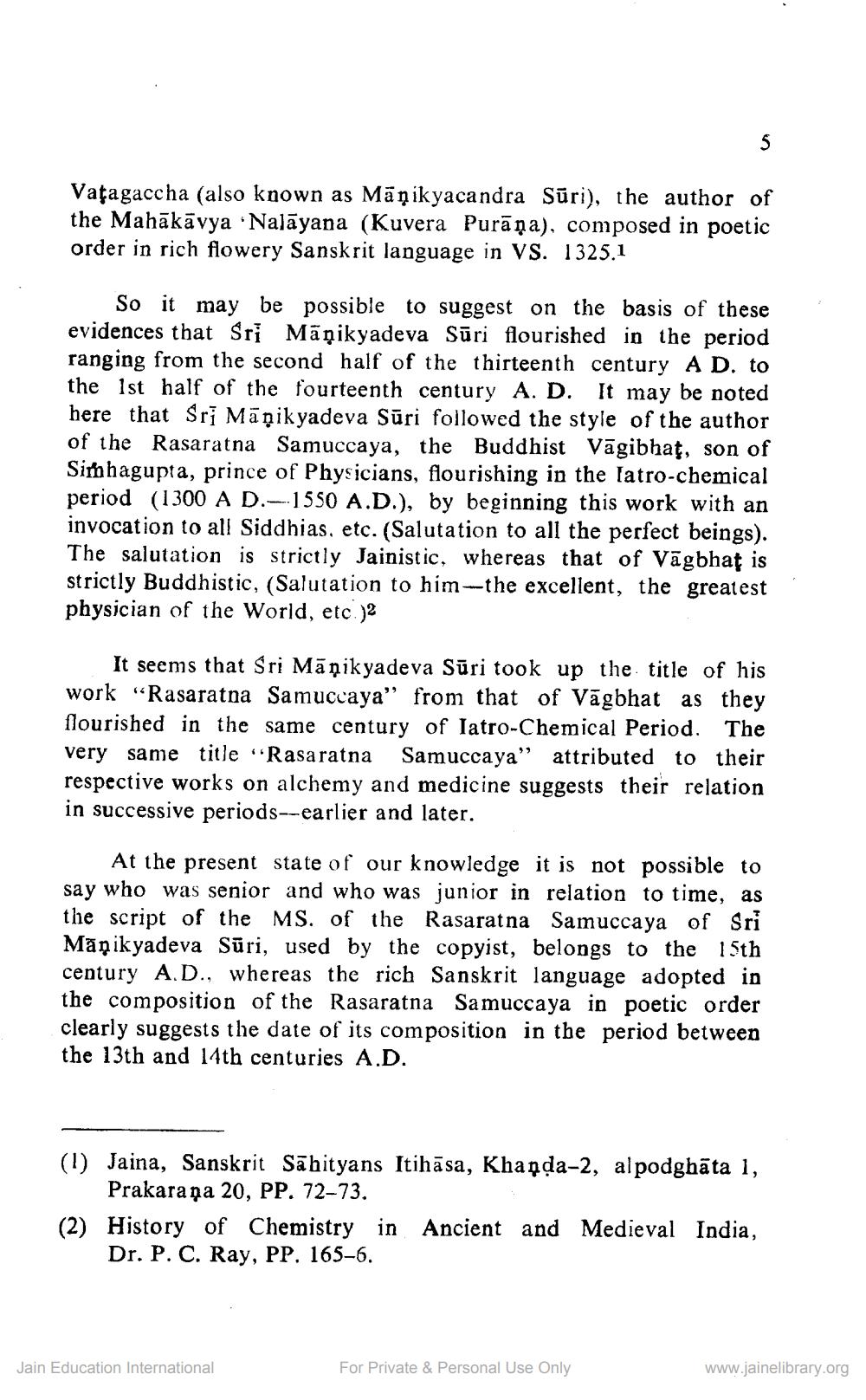________________
Vațagaccha (also known as Māņikyacandra Sūri), the author of the Mahākāvya Nalāyana (Kuvera Purā ņa), composed in poetic order in rich flowery Sanskrit language in Vs. 1325.1
So it may be possible to suggest on the basis of these evidences that Sri Māņikyadeva Sūri flourished in the period ranging from the second half of the thirteenth century AD. to the 1st half of the fourteenth century A. D. It may be noted here that Sri Māņikyadeva Sūri followed the style of the author of the Rasaratna Samuccaya, the Buddhist Vāgibhat, son of Simhagupta, prince of Physicians, flourishing in the latro-chemical period (1300 AD.-- 1550 A.D.), by beginning this work with an invocation to all Siddhias, etc. (Salutation to all the perfect beings). The salutation is strictly Jainistic, whereas that of Vāgbhat is strictly Buddhistic, (Salutation to him--the excellent, the greatest physician of the World, etc.)2
It seems that Sri Māņikyadeva Sūri took up the title of his work “Rasaratna Samuccaya” from that of Vāgbhat as they flourished in the same century of latro-Chemical Period. The very same title “Rasaratna Samuccaya” attributed to their respective works on alchemy and medicine suggests their relation in successive periods--earlier and later.
At the present state of our knowledge it is not possible to say who was senior and who was junior in relation to time, as the script of the MS. of the Rasaratna Samuccaya of Sri Māņikyadeva Sūri, used by the copyist, belongs to the 15th century A.D., whereas the rich Sanskrit language adopted in the composition of the Rasaratna Samuccaya in poetic order clearly suggests the date of its composition in the period between the 13th and 14th centuries A.D.
(1) Jaina, Sanskrit Sāhityans Itihāsa, Khaqda-2, alpodghāta 1,
Prakaraņa 20, PP. 72–73. (2) History of Chemistry in Ancient and Medieval India,
Dr. P. C. Ray, PP. 165–6.
Jain Education International
For Private & Personal Use Only
www.jainelibrary.org




